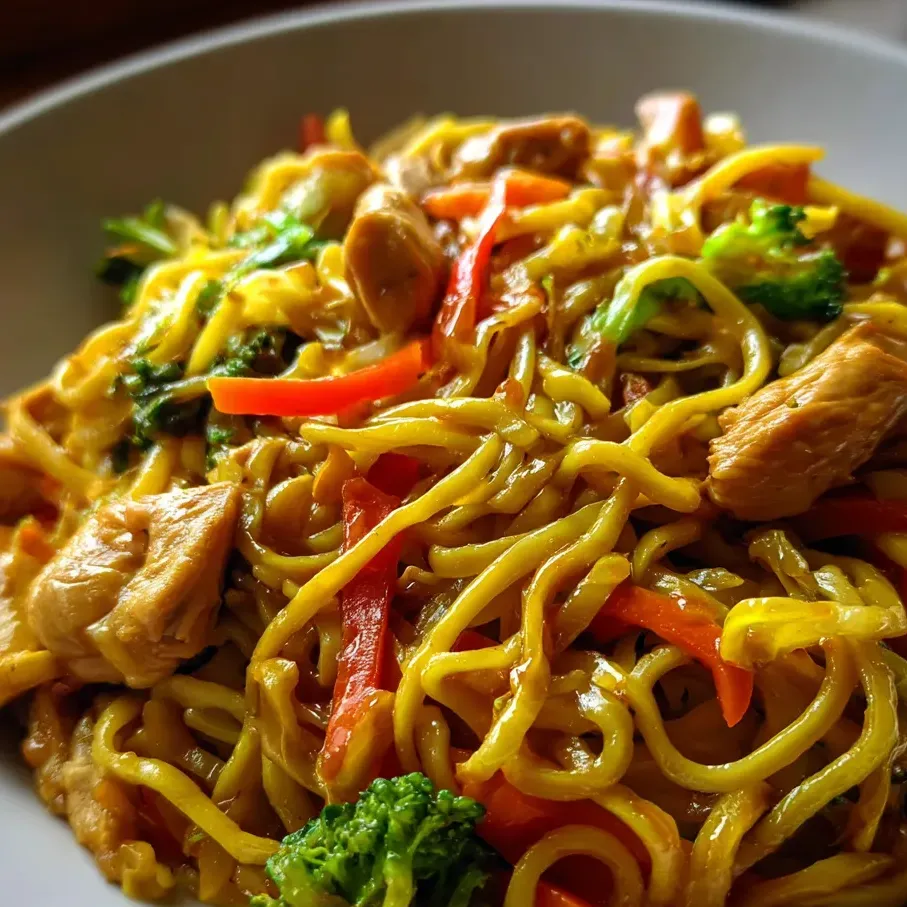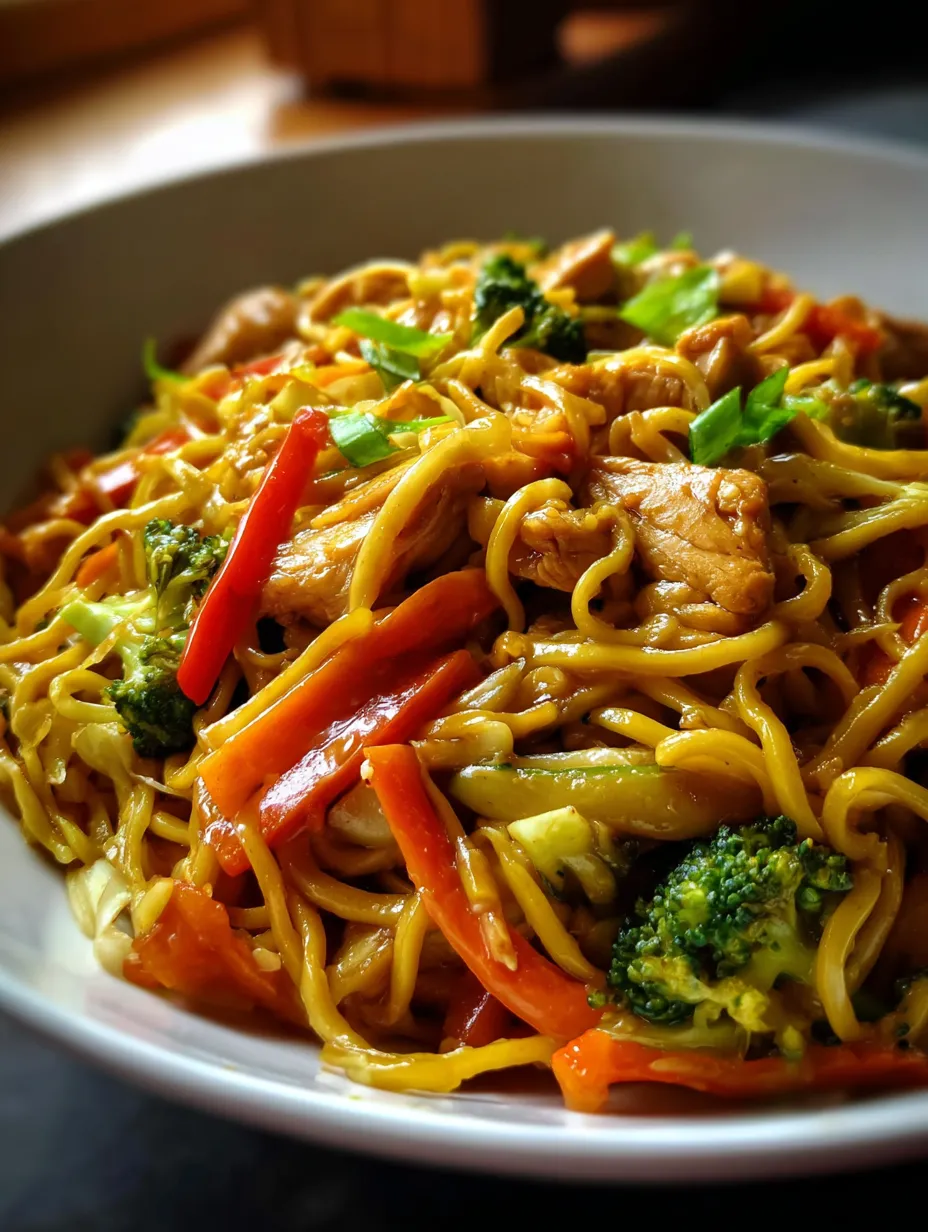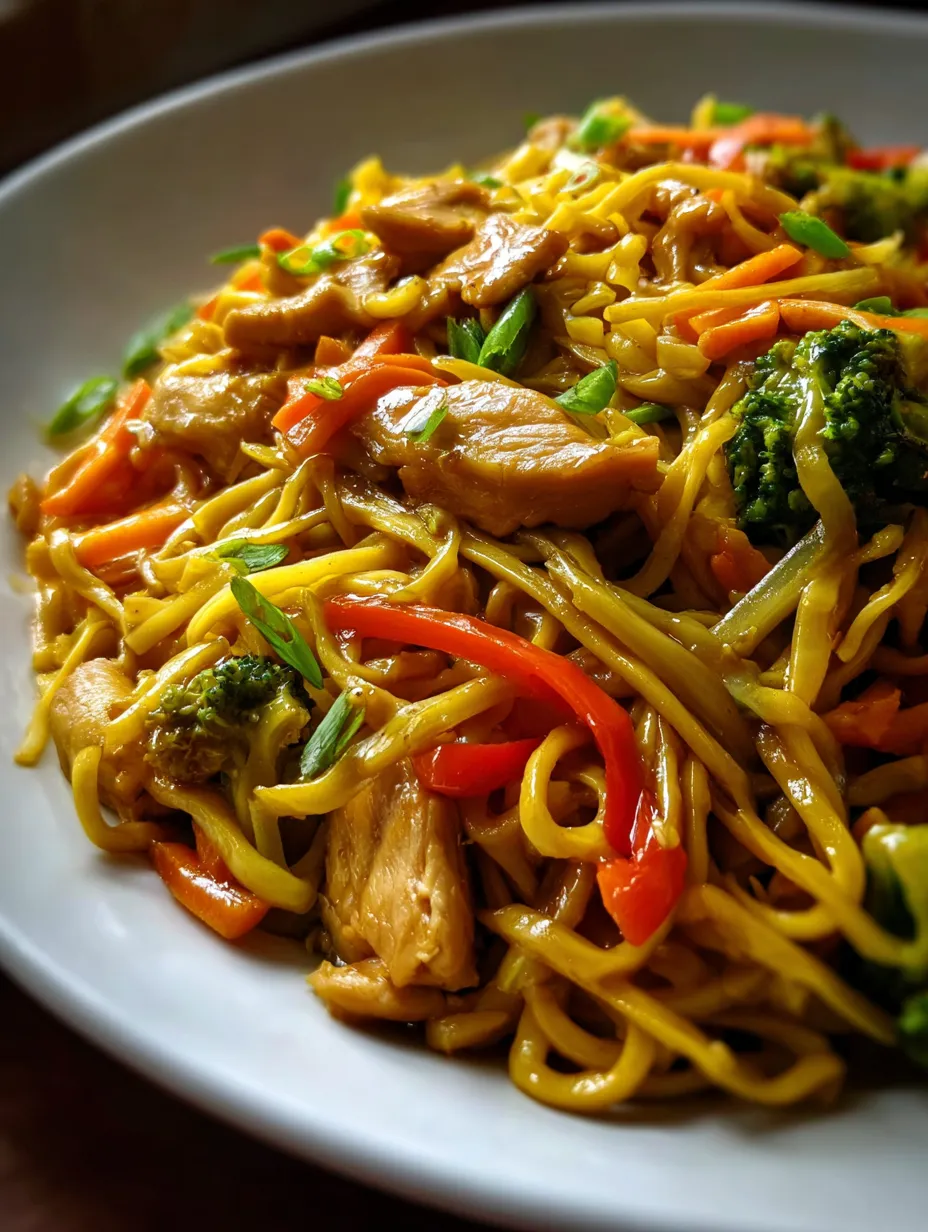 Save
Save
Chicken chow mein is the weeknight dinner hero I turn to when I crave something fast but full of flavor. The luscious sauce mingles with tender chicken and crisp vegetables for a delicious dish that feels restaurant-worthy yet comes together in a single pan.
I remember making this chow mein the first time to impress my little brother when we were both home from college. It blew us away with how good homemade chow mein can be and now it is a regular special request.
Ingredients
- Chow mein noodles: These bring the classic chew and soak up all that delicious sauce Look for the freshest you can find or use dried if you prefer
- Chicken breast: Slices of this lean protein stay super tender when stir fried Fresh chicken makes a big difference in flavor
- Vegetable oil: Helps brown the chicken without overpowering the sauce Go for a neutral oil like canola or sunflower
- Bell peppers: Bring sweetness and vibrant color Choose firm glossy peppers for best taste
- Broccoli florets: Add earthy crunch and heartiness Tight green florets signal freshness
- Carrots: Offer gentle sweetness and a pop of color Choose brightly hued carrots for the best flavor
- Green onions: Lend a gentle bite and fresh herby lift Crisp stalks and dark green tops are signs of a good bunch
- Garlic: Infuses everything with irresistible aroma Use plump cloves and mince fresh
- Soy sauce: Provides major umami to the sauce Look for a low sodium version if preferred
- Oyster sauce: Adds deep savory a signature Chinese stir fry flavor Pick one with simple ingredients for best taste
- Sesame oil: Gives the noodles a nutty aroma and finish Always use toasted sesame oil for depth
- Cornstarch: Thickens the sauce quickly and makes it glossy Buy a new box if yours has been in the pantry too long
- Chicken broth: Helps create the silky sauce A richer homemade or high quality store bought broth will make a difference
Step-by-Step Instructions
- Prepare the Noodles:
- Cook your chow mein noodles following the package directions until they reach a perfect noodle softness Drain and set aside so they are ready to toss in later
- Brown the Chicken:
- Heat vegetable oil in a large pan over medium high warmth Add sliced chicken breast and cook without moving too much until one side is sizzling and brown only then flip and continue until cooked through The goal is caramelized edges and ultra juicy meat
- Stir Fry the Vegetables:
- Add bell peppers broccoli and carrots straight into the pan Push them around with a spatula for three to four minutes until they are just barely turning tender and staying crisp Their color should brighten but do not let them soften too much
- Layer Aromatics:
- Add the garlic and green onions right on top Let them sizzle together for a minute so the whole kitchen smells amazing but stop before the garlic browns
- Make the Sauce:
- In a separate bowl whisk together soy sauce oyster sauce sesame oil cornstarch and chicken broth until no lumps remain This mixture will be the magic flavor maker of your chow mein
- Combine Everything:
- Pour the sauce over the browned chicken and sautéed vegetables Quickly stir and watch as it bubbles and thickens making everything glossy
- Add the Noodles:
- Fold in the cooked noodles gently tossing so every strand gets coated with the sauce and mingles with the chicken and vegetables Keep tossing until the sauce is evenly distributed
- Finish and Serve:
- Once everything looks shining and saucy serve the chow mein hot straight from the pan to the table

Whenever I make this dish I always look forward to the nutty aroma of toasted sesame oil as soon as it hits the pan It just signals that dinner is headed in the right direction My mom used to sneak extra broccoli into my bowl and now I do the same for my own family telling them it is the best part
Storage Tips
Leftover chow mein keeps well in an airtight container in the fridge for about three days Make sure to let it cool before sealing to avoid sogginess When reheating splash in a spoonful of water or chicken broth to help revive the sauce and keep noodles from drying out This dish can be frozen but the veggies may lose a little crunch after defrosting
Ingredient Substitutions
Swap chicken for shrimp tofu or even thinly sliced beef if you want to change it up Snow peas snap peas or red cabbage all make fun veggie swaps Rice noodles can also work in a pinch Adjust the soy sauce and oyster sauce for more or less saltiness and feel free to toss in a pinch of crushed red pepper for heat if desired
Serving Suggestions
Serve it just as it is or sprinkle extra chopped green onions and a handful of toasted sesame seeds over the top I love this next to simple steamed rice or even as a side for egg drop soup To make it a full meal round out the table with a crunchy Asian slaw or light cucumber salad

Cultural Context
Chow mein is a beloved Chinese takeout classic known for its quick high heat cooking method and its flexible ingredient list The stir fry technique helps keep ingredients crisp and colorful while the savory sauce is that irresistible element that pulls every bite together Home cooks all over the world have adapted chow mein to what is available in their own kitchens which makes it endlessly customizable
Frequently Asked Questions
- → How do you keep chow mein noodles from getting soggy?
Cook the noodles just until al dente, then rinse with cold water and drain well before stir-frying. This keeps them firm and prevents sticking.
- → Can I substitute chicken breast with another protein?
Yes, you can use shrimp, beef strips, or tofu as alternatives. Adjust cooking time accordingly to avoid overcooking.
- → What vegetables work well in this dish?
Along with bell peppers, broccoli, and carrots, try snow peas, mushrooms, or baby corn for added variety and crunch.
- → How can I make the sauce spicier?
Add a spoonful of chili sauce or a sprinkle of red pepper flakes to the sauce mixture for a spicy kick.
- → Is this dish gluten-free?
Use gluten-free chow mein noodles and sauces to keep the dish gluten-free. Double-check ingredient labels to be sure.
